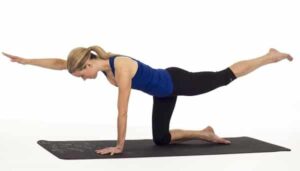News & Advice
Simple exercises that can ease low back pain
Pain in the lower back is the most common area of concern for most of our patients. While manual therapy can be extremely beneficial to help ease the symptoms, incorporating simple, daily exercise routines are the best preventive measure.
Call 01282 453 110 to book your appointment.
A large proportion of us now work from home, or have to adapt to a new virtual way of working – which often involves prolonged periods sat at a desk, most of which are unlikely to be ergonomically correct. Incorporating exercises that can ease low back pain into your daily routine is the best way to start. Studies have linked being inactive with being overweight and obese, type 2 diabetes, some types of cancer, and early death.
Another side-effect of inactivity can be the development of musculoskeletal pain; this includes pain that originates from muscles, tendons, ligaments and joints. Lower back pain is the most prevalent musculoskeletal injury that we see in our physiotherapy clinics. More often than not, back pain will usually improve within a few weeks or months from its initial onset. There are several things you can try to help reduce your pain in the meantime.
Exercises that can ease low back pain
Stay active
To improve lower back pain it is important to improve spinal mobility and stability which can be achieved both inside and outside of your homes.
- Walking
Walking is a fantastic form of low impact exercise that can be performed anywhere. Walking has numerous health benefits for the body in general; however it also has a significantly important role in keeping the spine healthy. Walking:
- Strengthens muscles in the feet, legs, hips, and torso.
- Nourishes the spinal structures.
- Improves flexibility and posture
- Strengthens bones and reduces bone density loss
- Helps with controlling weight
If you are in pain, try incorporating a walk into your routine gradually. It may also help to walk little and often throughout the day to break up any static postures. The NHS recommends the use of the Active 10 app which allows you to track how much and how fast you have walked. To keep things interesting, it gives you goals to work towards and rewards your progress. The app can be downloaded through the NHS website.
https://www.nhs.uk/oneyou/active10/home
- Mobility exercise – Cat and camel
A fantastic mobility exercise that can be performed indoors is called the ‘cat and camel’. It helps to mobilise the entire length of the spinal column – from your neck down towards your lower back – whilst also being gentle on the spine.
Start on your hands and knees, with your back in a neutral position. Arch your back, lifting your head up and pushing your tail bone out, making a dish with your spine. Next, bend your back up by tucking your head and tail bone in and pulling your belly button in towards your spine, making a curve through your back. Move between these two positions, in a nice slow and controlled movement. Perform for 60 seconds, rest for 30 seconds, and repeat an additional 2 times.

- Spinal stability exercise – Bird dog
The Bird dog is an excellent exercise that helps to promote a stable core whilst movement occurs at the surrounding joints (either the legs or arms and legs together).
Start on your hands and knees, with your hands under your shoulders, and knees under your hips. Tighten the abdominal core muscles. Extend the opposite leg and the opposite arm simultaneously, making sure you maintain good control in your torso. Do not allow your body or hips to rotate. Hold each extended pose for 10 seconds before retuning back to the starting All 4’s position, and repeating on the opposite side. Perform 2 sets of 5 holds on each side.

Although these exercises can work well to improve low back pain symptoms, if your pain is worsening or you just want some tailored advice, it is always worth seeing a certified Physiotherapist who can develop a comprehensive treatment programme individualised to you.